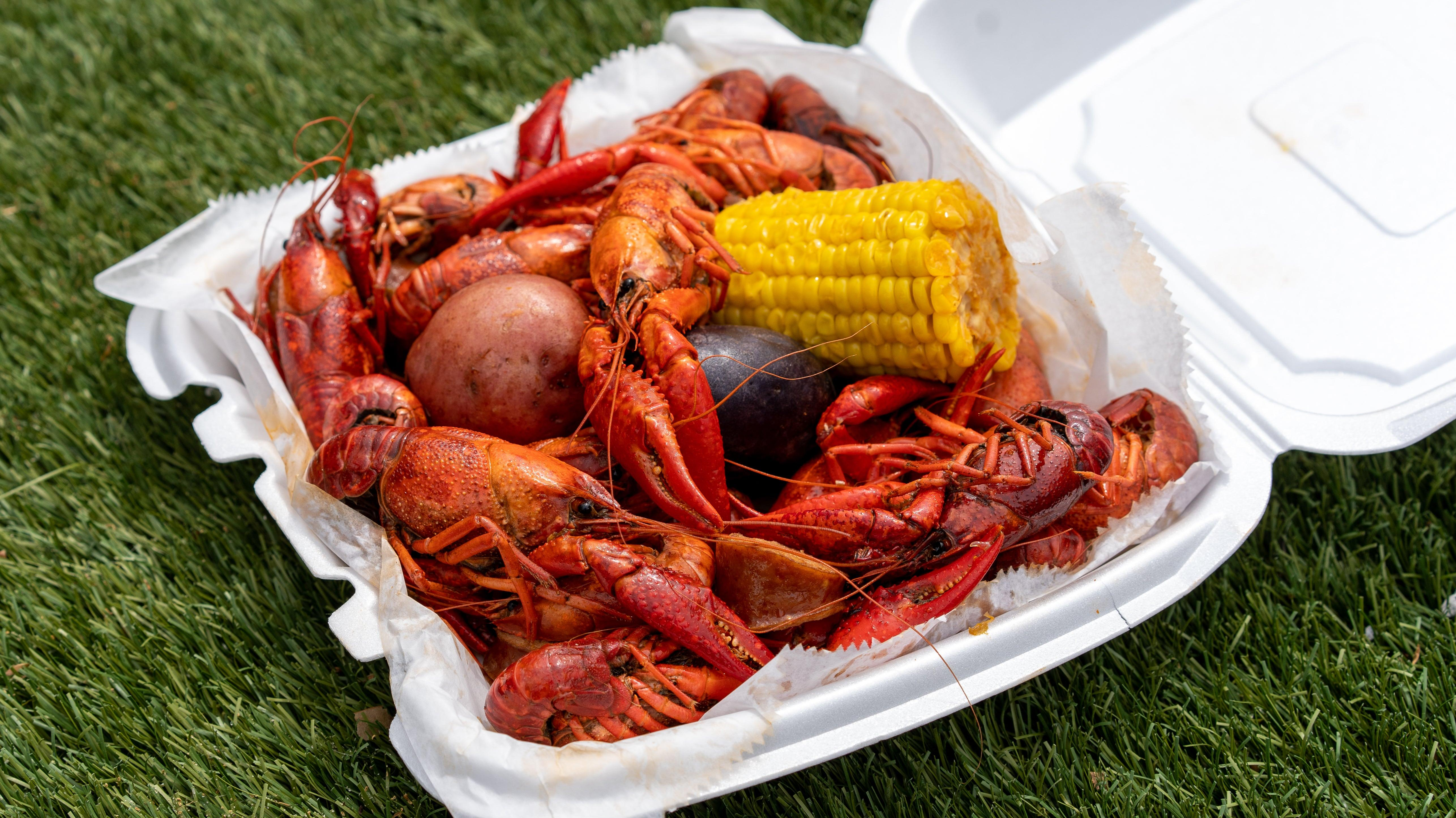New Orleans Faces A Crawfish Crisis
Crawfish shortages and high prices threaten the city's supply of the beloved mudbugs.
New Orleans is in the midst of celebrating carnival season, which culminates next Tuesday on Mardi Gras Days. But the Great Crawfish Crisis of 2024 looms over the city and Louisiana, where the mudbugs are on menus from late winter through summer.
Normally, they can be purchased everywhere from gas stations to corner markets and are a staple of backyard gatherings, where crawfish boils involve potatoes, corn, crawfish, and lots of beer. But experts are warning of shortages and high prices this year in a region normally awash with the bright red crustaceans.
"It's going to be rough this year," says Christopher Bonvillain, an expert in crawfish biology and ecology at Nicholls State University in Thibodaux, Louisiana.
Why New Orleans’ crawfish supply is in trouble
The reason is a drought and high temperatures that swept across the area last summer. July and August 2023 were the hottest on record, according to the National Weather Service, when average temperatures topped out near 100 degrees Fahrenheit. The daily thunderstorms that usually accompany summer heat were absent, which caused consternation for crawfish farmers.
Crawfish are raised under similar conditions to rice—in fact, many farmers raise both crops alongside each other. After planting rice, they flood fields using commercial pumps. Once the rice grows to a height where it can shade the paddy, sometime around June, farmers add "seed" crawfish, aka small ones. The crustaceans dig into into the wet ground to build burrows, similar to those that rabbits use in dry ground.
Natural rain helps activate crawfish growth; a single female crawfish can hatch between 400 and 900 eggs. It can take about two years for a crawfish to grow to edible size, so many of the crawfish that are eaten this year were hatched in 2022.
However, the heat and lack of rain in 2023 caused a number of those ponds to dry up, killing off some of the crawfish that would be harvested this year, which are known as "carry over crawfish," as well as the smaller ones that mature to be harvested in the future.
Another, smaler problem was an influx of salt water from Gulf of Mexico canals into the ponds, which are fresh water. A drought damage report from Louisiana State University estimated that more than 45,000 acres of ponds could not produce crawfish, due to either drought or the salt.
"I don't think I've ever seen anything like this in my lifetime, ever," says Bonvillain, a self-described "crawfish nerd."
Crawfish are a crucial crop
The situation isn't just an inconvenience to diners. It's a crisis for Louisiana's seafood industry. With 1,300 crawfish farmers, and another 1,000 fishers employed in the industry, Louisiana leads the country in crawfish production, supplying 100–120 million pounds per year.
About 90% of Louisiana crawfish are farmed, Bonvillain estimates, with a small number grown wild. The industry contributes more than $300 million to the state's economy annually, according to the state department of wildlife and fisheries.
In January, Mark Shirley at the AgCenter of Louisiana State University raised an alarm with his dismal crawfish forecast. "The spring crop will be a fraction of what is normally caught," Shirley wrote.
In addition to the short supply of crawfish, Shirley said farmers are also seeing a significant increase in production costs. The amount of money it takes to pump water for flooding the fields, and keep them topped up with water, has tripled and in some cases quadrupled, he wrote.
"Combined with the rise in labor cost, bait, and supplies, this will be a very expensive crop to produce," Shirley wrote. Even though farmers should be able to fetch record prices, he's concerned that a number will be unable to recover their total costs.
Consumers are gasping at high crawfish prices
Crawfish has always been considered an affordable ingredient, with some markets charging as little as $2.99 per pound in peak season (a typical serving is three to five pounds per person). Early season crawfish always cost more.
Big EZ Seafood and Oyster in Kenner, Louisiana raised eyebrows last month when it listed its first crawfish supply at $15.50 a pound. "You gotta pay to play!" the restaurant declared on Instagram. At that amount, "I'll settle for the sides," one Facebook user replied.
Big EZ's price has since dropped, most recently to $11.99 in a one-day special last week, and it has posted videos of sacks of crawfish arriving in its kitchen.
Veteran restaurant owner Jason Seither of Seither's Seafood in Harahan, a New Orleans suburb, thinks the situation has been somewhat overblown. "This year, it's not as good in the early season, but we'll be all right in March, April, and May," Seither says. "At least I'm praying."
Seither, who typically boils thousands of pounds a day during peak season, acknowledges this year is "the slowest start I've ever seen in my 20 years" and that he's never seen so little available.
As of last week, there were no crawfish available at Rouse's Supermarkets, a big local chain known for its big displays of the bright red bugs, said Marcy Nathan, a Rouse's spokesperson. "When there are crawfish, we will have crawfish," Nathan said. "First, we have to have crawfish."
